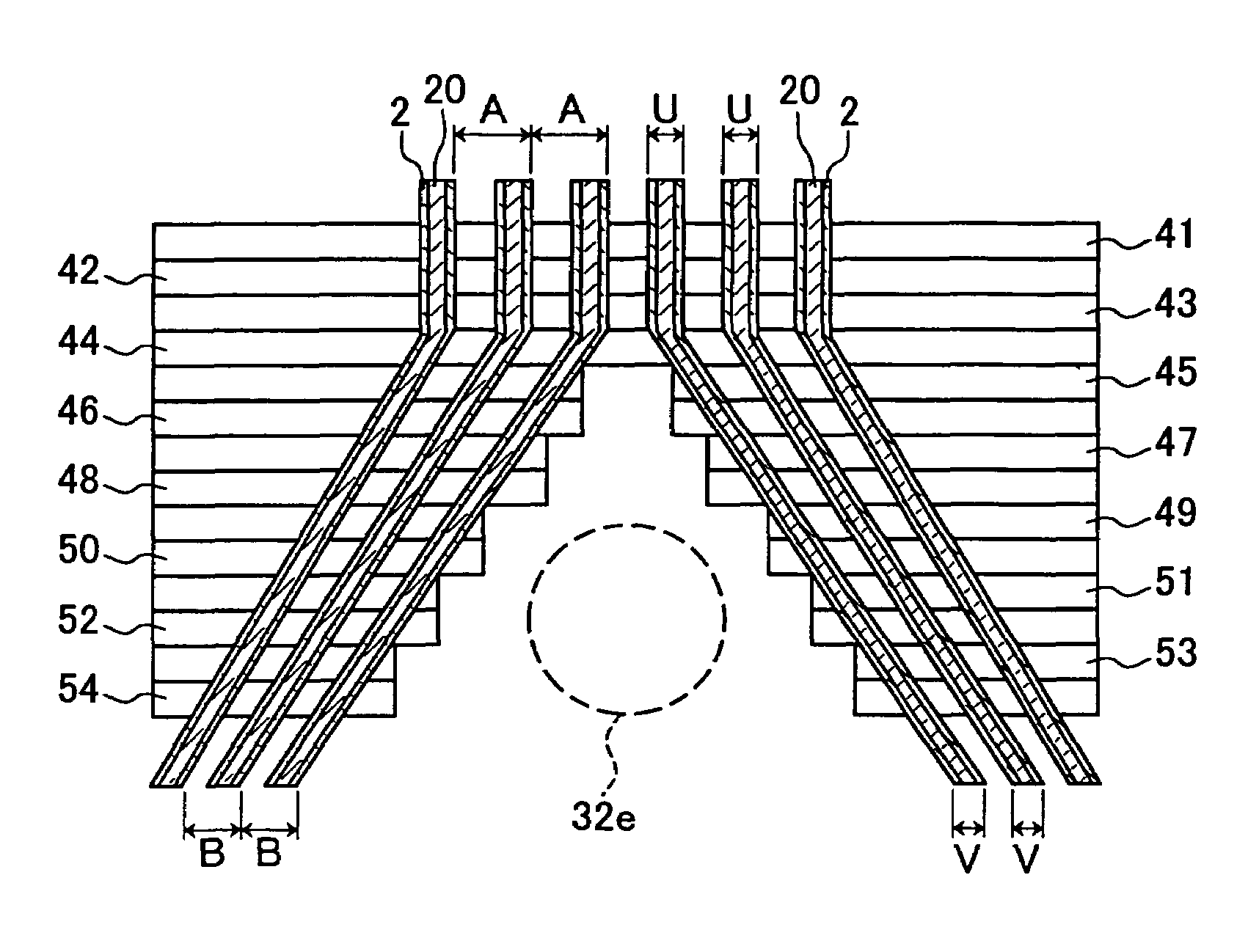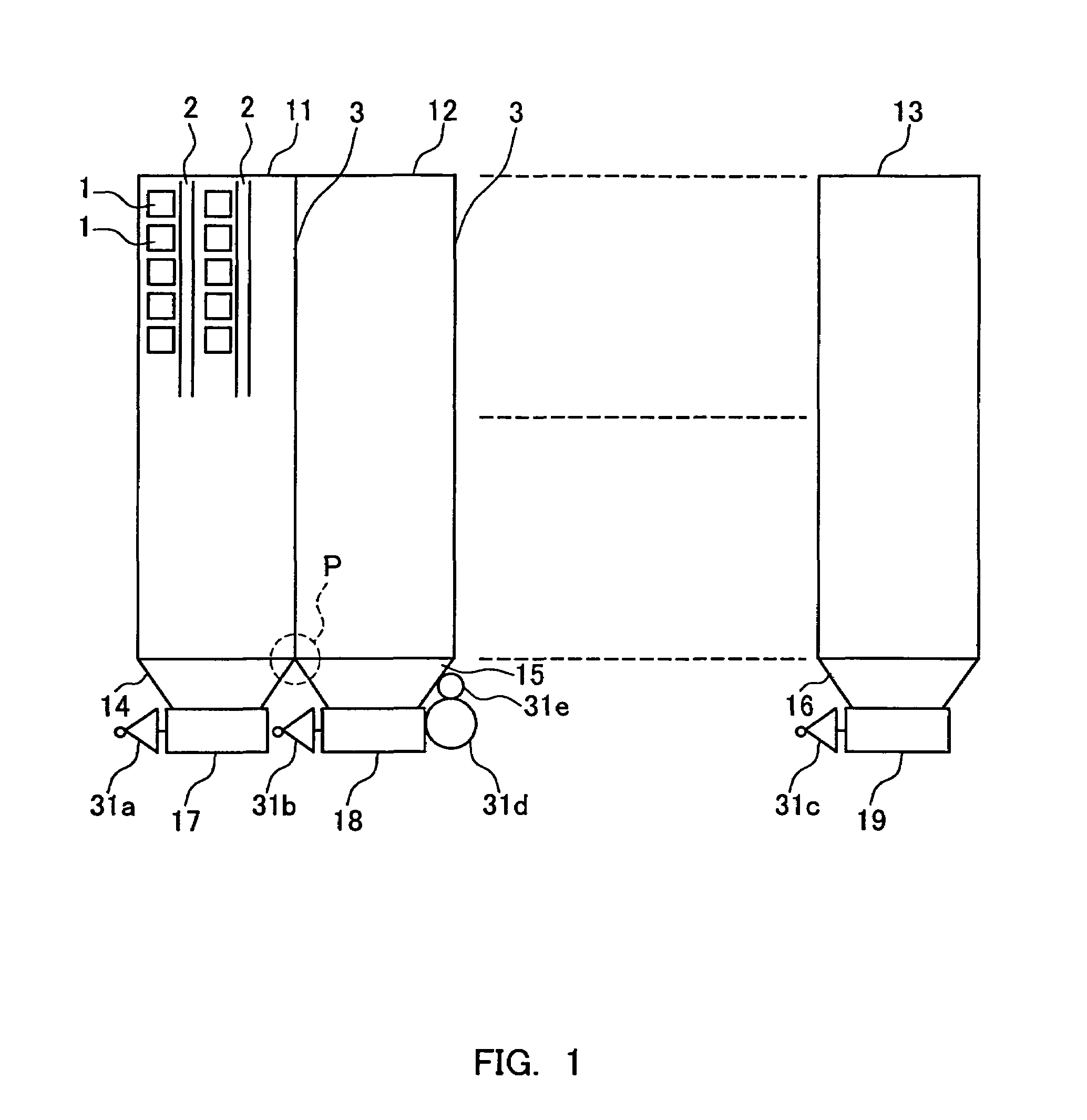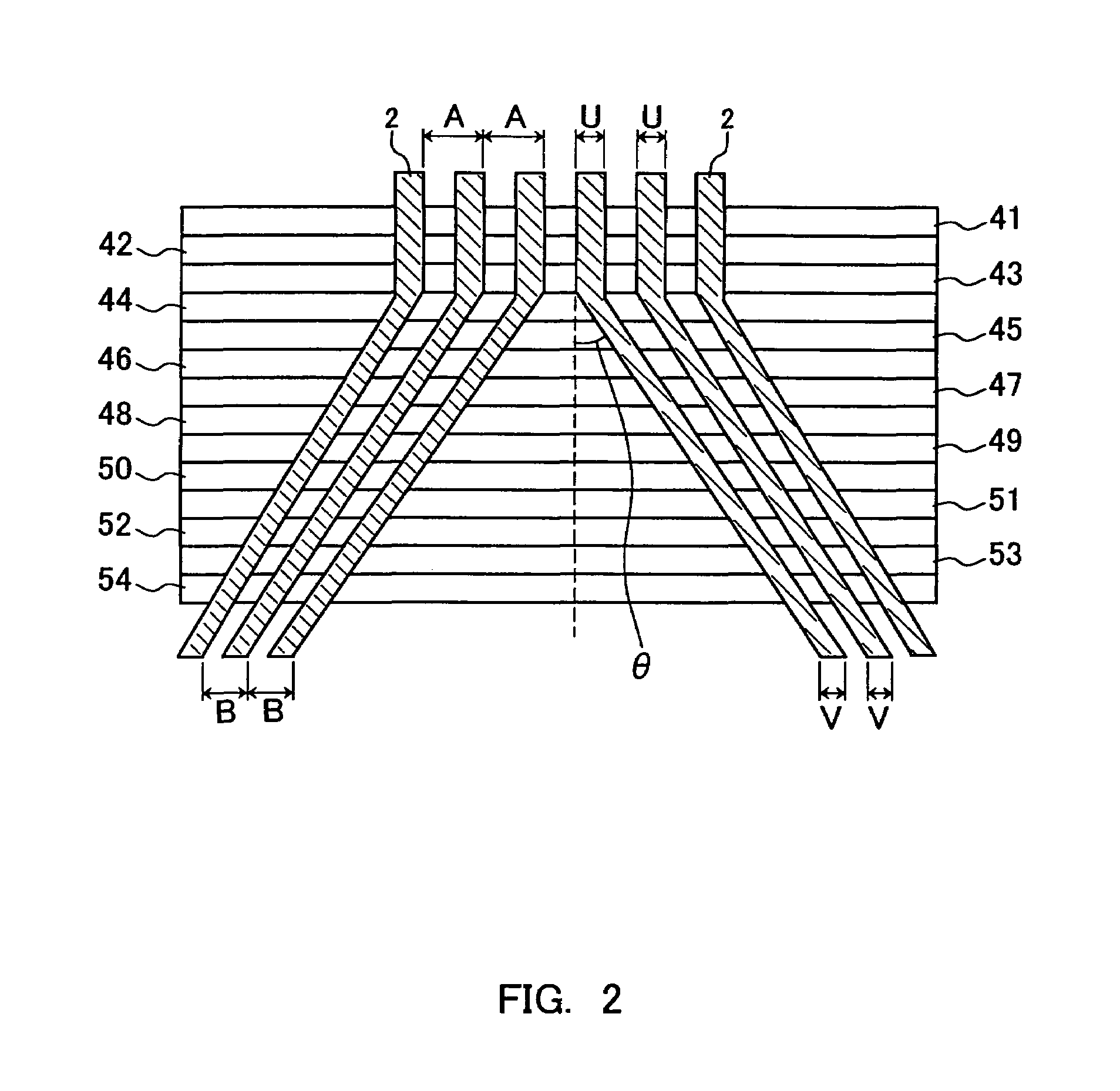Imaging device with vertical charge transfer paths having appropriate lengths and/or vent portions
a vertical charge transfer and imaging device technology, applied in the field of solid-state imaging devices and imaging systems, can solve the problems of difficult manufacture of read-out amplifiers with uniform input/output characteristics, troublesome signal processing, and blockage of images, and achieve the effect of easy signal processing
- Summary
- Abstract
- Description
- Claims
- Application Information
AI Technical Summary
Benefits of technology
Problems solved by technology
Method used
Image
Examples
first embodiment
[0030]FIG. 1 shows the configuration of a CCD-type solid-state imaging device in accordance with a first embodiment of the present invention. In this solid-state imaging device, photodiodes (photoelectric conversion portions) 1 are formed in photoelectric conversion blocks 11, 12, . . . , 13, in the form of rows and columns (i.e. a matrix or two-dimensional array). Between the columns of photodiodes, vertical charge transfer paths (VCCD) 2 extend along the columns.
[0031]In this solid-state imaging device, vertical / horizontal conversion portions (V-H conversion portions) 14, 15, . . . , 16 are formed between the photoelectric conversion blocks 11, 12, . . . 13 and the horizontal charge transfer paths (HCCD) 17, 18, . . . , 19. The horizontal charge transfer paths are connected to read-out amplifiers 31a, 31b, . . . , 31c. In this arrangement, the read-out amplifiers are placed in spaces that result from the tapering of the vertical CCDs, so that it is possible to place them directly ...
second embodiment
[0039]FIG. 3 shows the configuration of a CCD-type solid-state imaging device in accordance with a second embodiment of the present invention. Also in this solid-state imaging device, as in the first embodiment, the photodiodes 1 and the vertical charge transfer paths 2 are arranged in photoelectric conversion blocks 21, 22, . . . , 23, and horizontal charge transfer paths 27, 28, . . . , 29 and read-out amplifiers 32a, 32b . . . , 32c are provided for each of these photoelectric conversion blocks 21, 22, . . . ,23. V-H conversion portions 24, 25, . . . , 26 are formed between the photoelectric conversion blocks and the horizontal transfer electrodes.
[0040]In this solid-state imaging device, conducting lines 20 are formed along the vertical charge transfer paths 2. These conducting lines 20 feed a driving pulse to the lower transfer electrodes (not shown in the drawing), through contact holes that are formed as appropriate. The contact holes are formed at predetermined spacings corr...
PUM
 Login to View More
Login to View More Abstract
Description
Claims
Application Information
 Login to View More
Login to View More - R&D
- Intellectual Property
- Life Sciences
- Materials
- Tech Scout
- Unparalleled Data Quality
- Higher Quality Content
- 60% Fewer Hallucinations
Browse by: Latest US Patents, China's latest patents, Technical Efficacy Thesaurus, Application Domain, Technology Topic, Popular Technical Reports.
© 2025 PatSnap. All rights reserved.Legal|Privacy policy|Modern Slavery Act Transparency Statement|Sitemap|About US| Contact US: help@patsnap.com



